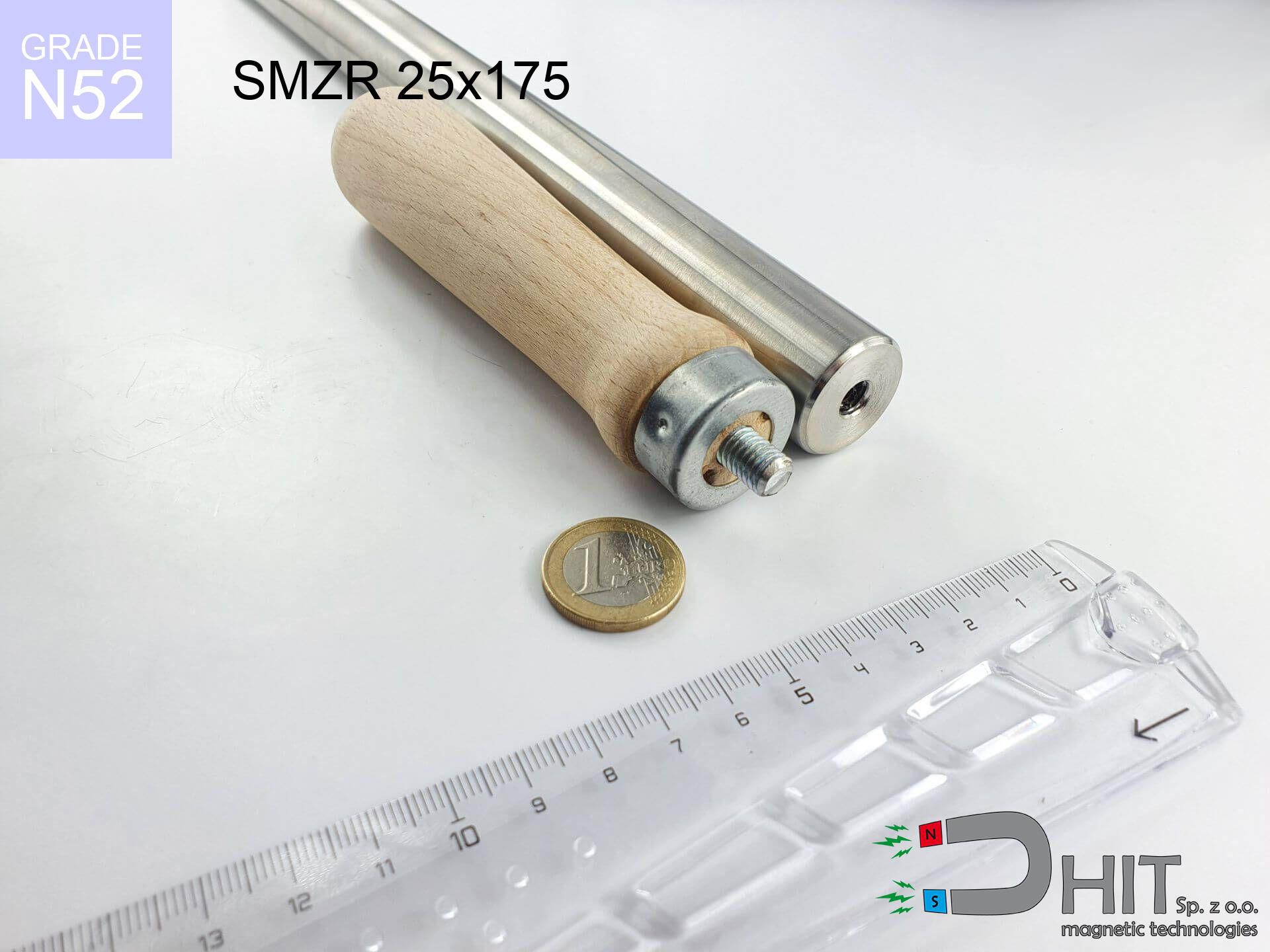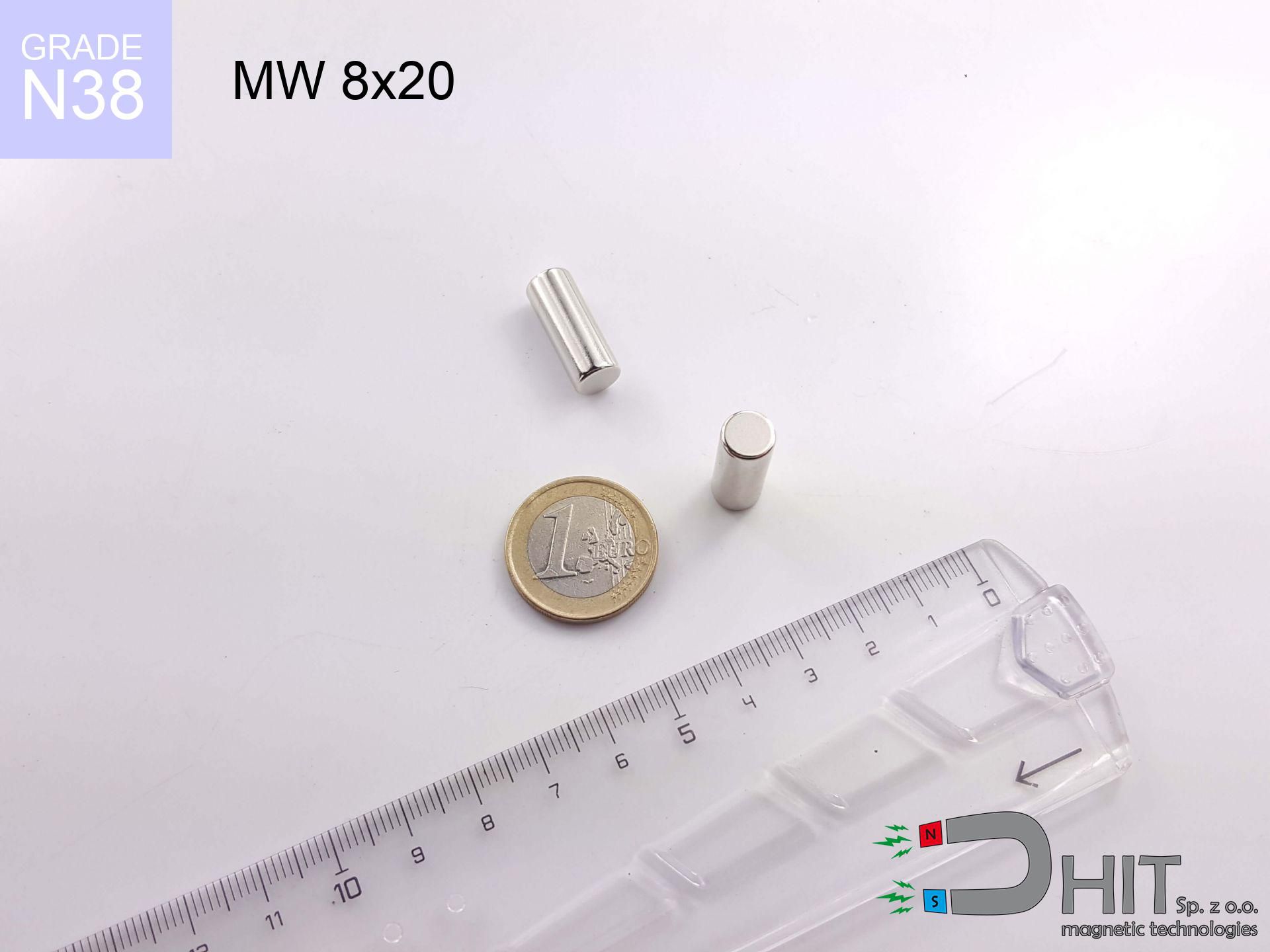UMT 29x38 white / N38 - magnetic pin
board holder
catalog number 230283
GTIN: 5906301814351
diameter Ø
29
mm [±0,1 mm]
height
38
mm [±0,1 mm]
max. temperature
≤ 80
°C
catalog number 230283
GTIN: 5906301814351
diameter Ø
29 mm [±0,1 mm]
height
38 mm [±0,1 mm]
max. temperature
≤ 80 °C
6.81 ZŁ gross price (including VAT) / pcs +
5.54 ZŁ net price + 23% VAT / pcs
bulk discounts:
need more quantity?Want to bargain?
Give us a call tel: +48 888 99 98 98 or get in touch through contact form on our website. You can check the lifting capacity and the appearance of neodymium magnets in our force calculator magnetic calculator
Orders placed by 2:00 PM will be shipped on the same business day.
Specification: board holder 29x38 white / N38
Magnetic properties of the material N38
Physical properties of sintered neodymium magnets Nd2Fe14B
Compilation of suggested goods
Advantages as well as disadvantages of neodymium magnets NdFeB.
In addition to immense strength, neodymium magnets have the following advantages:
- They do not lose their power (of the magnet). After approximately 10 years, their strength decreases by only ~1% (theoretically),
- They are highly resistant to demagnetization by external magnetic field,
- In other words, thanks to the glossy nickel, gold, or silver finish, the element gains an aesthetic appearance,
- They exhibit extremely high magnetic induction on the surface of the magnet,
- Magnetic neodymium magnets are characterized by very high magnetic induction on the surface of the magnet and can operate (depending on the shape) even at temperatures of 230°C or higher...
- Due to the option of accurate forming or adaptation to individual needs – neodymium magnets can be produced in many variants of shapes and sizes, which expands the range of their possible uses.
- Significant importance in modern technologies – find application in computer drives, electric drive mechanisms, medical apparatus or very advanced devices.
Disadvantages of neodymium magnets:
- They are prone to breaking as they are fragile when subjected to a powerful impact. If the magnets are exposed to impacts, we recommend using magnets in a protective case. The steel housing in the form of a holder protects the magnet from impacts and simultaneously increases its overall strength,
- They lose strength at high temperatures. Most neodymium magnets experience permanent loss of strength when heated above 80°C (depending on the form and height). However, we also offer special magnets with high temperature resistance, up to 230°C,
- Due to their susceptibility to corrosion in a humid environment, we recommend using waterproof magnets made of rubber, plastic, or other moisture-resistant materials when using them outdoors,
- The use of a cover or a magnetic holder is recommended due to the limited possibilities of manufacturing threads or complex shapes in the magnet
- Health risk associated with microscopic parts of magnets can be dangerous, in case of ingestion, which is particularly important in the context of children's health. It's also worth noting that miniscule components of these magnets are able to complicate diagnosis when they are in the body.
Safety Guidelines with Neodymium Magnets
Magnets made of neodymium are fragile as well as can easily crack and shatter.
In the event of a collision between two neodymium magnets, it can result in them getting chipped. They are coated with a shiny nickel plating similar to steel, but they are not as hard. In the case of a collision between two magnets, there can be a scattering of small sharp metal fragments in different directions. Protecting your eyes is essential.
Keep neodymium magnets away from TV, wallet, and computer HDD.
Strong magnetic fields emitted by neodymium magnets can damage magnetic storage media such as floppy disks, credit cards, magnetic ID cards, cassette tapes, video tapes, or other devices. They can also damage televisions, VCRs, computer monitors, and CRT displays. You should especially avoid placing neodymium magnets near electronic devices.
The magnet is coated with nickel. Therefore, exercise caution if you have an allergy.
Studies clearly indicate a small percentage of people who suffer from metal allergies such as nickel. An allergic reaction often manifests as skin redness and rash. If you have a nickel allergy, try wearing gloves or avoid direct contact with nickel-plated neodymium magnets.
Neodymium magnets should not be in the vicinity children.
Neodymium magnets are not toys. You cannot allow them to become toys for children. In the case of small magnets, they can be swallowed and cause choking. In such cases, the only solution is to undergo surgery to remove the magnets, and otherwise, it can even lead to death.
Neodymium magnets can attract to each other, pinch the skin, and cause significant swellings.
If the joining of neodymium magnets is not under control, then they may crumble and crack. Remember not to approach them to each other or have them firmly in hands at a distance less than 10 cm.
Neodymium magnets can become demagnetized at high temperatures.
Whilst Neodymium magnets can demagnetize at high temperatures, it's important to note that the extent of this effect can vary based on factors such as the magnet's material, shape, and intended application.
Dust and powder from neodymium magnets are flammable.
Avoid drilling or mechanical processing of neodymium magnets. If the magnet is crushed into fine powder or dust, it becomes highly flammable.
People with pacemakers are advised to avoid neodymium magnets.
In the case of neodymium magnets, there is a strong magnetic field. As a result, it interferes with the operation of a heart pacemaker. However, if the magnetic field does not affect the device, it can damage its components or deactivate the device when it is in a magnetic field.
Neodymium magnets are among the most powerful magnets on Earth. The surprising force they generate between each other can surprise you.
Read the information on our website on how to properly utilize neodymium magnets and avoid significant harm to your body and unintentional damage to the magnets.
Under no circumstances should neodymium magnets be brought close to GPS and smartphones.
Neodymium magnets produce intense magnetic fields that interfere with magnetometers and compasses used in navigation, as well as internal compasses of smartphones and GPS devices.
So that know how powerful neodymium magnets are and why they are so dangerous, read the article - Dangerous very strong neodymium magnets.


![magnetic separator 32x125 [2xM8] / N52 magnetic separator 32x125 [2xM8] / N52](https://cdn3.dhit.pl/graphics/products/sm-32x125-2xm8-moj.jpg)
![magnetic separator 32x200 [2xM8] / N42 magnetic separator 32x200 [2xM8] / N42](https://cdn3.dhit.pl/graphics/products/sm-32x200-2xm8-fub.jpg)



